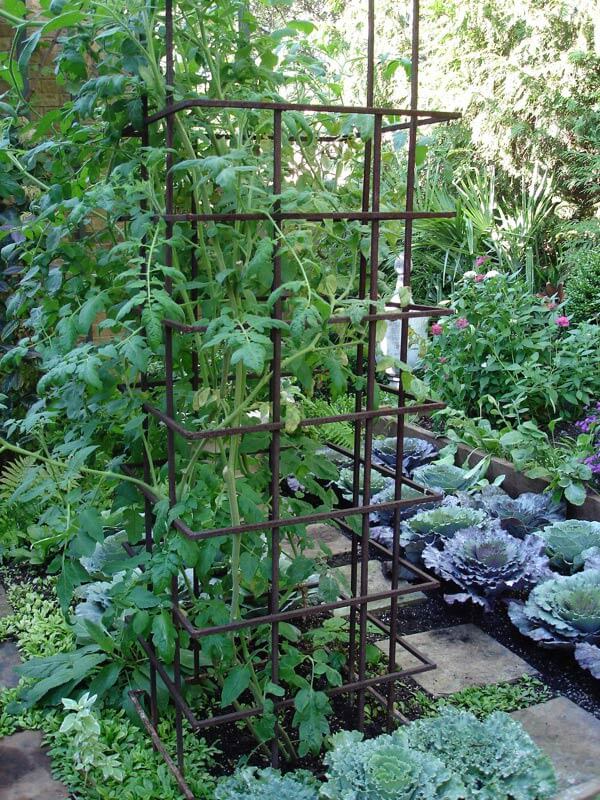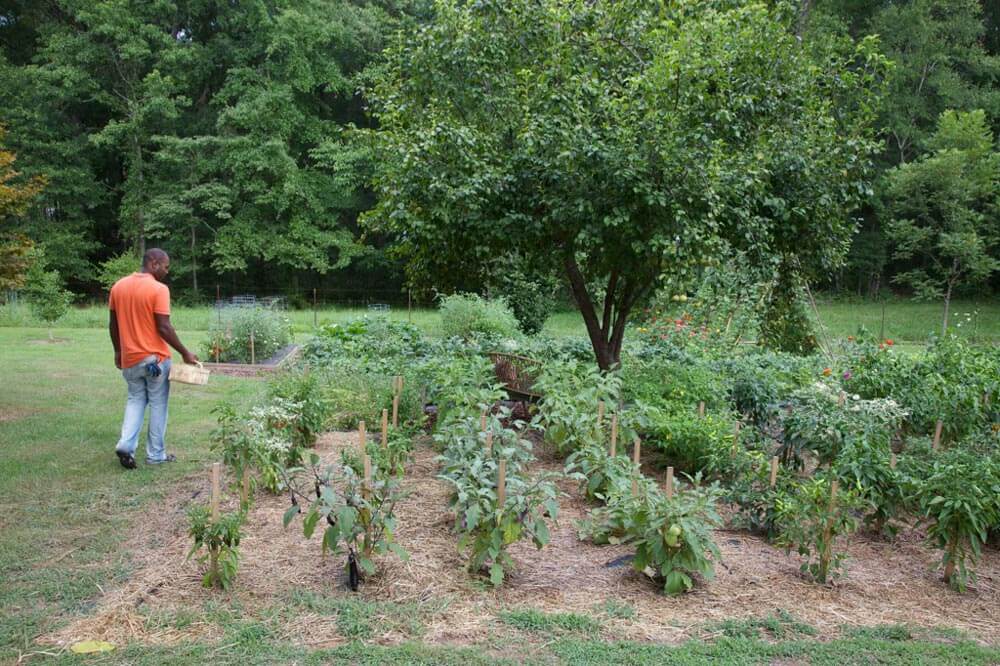Do you dream of a backyard filled with delicious dinner ingredients but don't know where to begin? Maybe you've been gazing at that perfect patch of sunny space in your yard but worry that turning it into a garden will be a difficult chore. Forget your worries and start planning your menus, because creating an in-ground garden can actually be a pretty simple process! Here's what to do.
1. Choose the right location
First, select a space that's fairly level and drains well, as your plants will be unhappy in standing water. Choose a location near the house, if possible. The more visible the garden, the more likely you'll be to spot any problems like droopy plants or pest-eaten leaves early on, giving you time to handle them before they get out of control. A garden located near the house or walkway also makes it easier to quickly harvest a handful of herbs when you're cooking or to pluck ripe tomatoes at their prime.
When selecting your site, look for a space that receives six to eight hours of full sun. Most vegetables and fruit, like peppers, tomatoes, and melons, need full sun to thrive and produce bountiful harvests. If your space is only partly sunny, don't despair—you can still grow crops like lettuce, kale, and many herbs. Know, too, that the amount of sunlight the space receives might vary during the year. A garden space that's full sun in December may turn into a shady spot once the deciduous trees leaf out in the spring.
Also, locating your in-ground garden near a water source will make your life much easier. Gardens need about an inch of water each week, and during dry periods, you'll need to assist Mother Nature in watering the garden. When that happens, you won't want to have to drag a hose across the lawn.
Think about garden size, too. If you're a new gardener, you may want to keep your first in-ground garden relatively small.
Finally, remember that existing shrubs, trees, or other plants near the garden will compete with your vegetables and herbs for water and nutrients. Also, avoid planting near black walnut trees, which contain a toxin that kills vegetable plants.
2. Create the design.
Once you've selected a site for your in-ground garden, spend a little time envisioning how you'd like it to look. Measure the space and use graph paper to plot out the dimensions. If it covers a sizable area, divide it into beds that are no wider than four feet so you can reach across to plant, weed, and harvest without having to step on the soil. Be sure to leave space for paths between the beds, and make them wide enough to accommodate a wheelbarrow.
3. Choose your plants.
Next, think about what you want to grow. Make a list of vegetables and herbs you like to eat and add them to your garden plan, paying attention to how much space each individual plant will need. The vegetables and herbs sections of our website are great resources for this information, as well as info on plant sizes, sun needs, length to harvest, and more. If you plan to grow peas, pole beans, cucumbers, tomatoes, or other vining plants, sketch in trellises or cages to support them. (Make sure to place these where they won't shade other crops.) Place crops that spread—like pumpkins and watermelons—where they can grow out onto the grass and not take over the entire garden.
To find the best tomatoes and peppers for your needs and your garden, check out our interactive Tomato Chooser and Pepper Chooser. And don't forget to add some flowers to your plan that will help draw pollinators!

4. Remove the existing lawn.
Now it's time to head outside to your garden area. Measure out your garden beds according to your plan, then outline them by sprinkling some flour or placing stakes in each corner and attaching strings between them. Once you've outlined your space, rake it to remove any debris. Then, remove the grass (and any rocks or sticks you dig up) with a sod cutter or sharp spade.
5. Build the soil.
You may think you're ready to plant, but there's one more important thing to do first: Improve the soil. Strong, healthy plants need good soil to thrive and produce well, and your existing soil may not be rich enough to support your garden. The easiest way to improve your soil is to mix a few inches of Miracle-Gro® Garden Soil for Vegetables and Herbs in with the existing dirt to both improve the texture and add just the right nutrients to get your plants off to a strong, well-fed start. (Bonus: It will also help protect against over- and under-watering.) A couple of other options are to mix compost in with the native soil or, if you're feeling ambitious, do a soil test and follow the instructions for adding amendments.
6. Set out your plants.
When you're ready to plant, choose Bonnie Plants. With more than a 100 years of experience, we know how to grow strong, vigorous plants for your garden. You can find your nearest Bonnie Plants retailer here.
Set your plants out according to your garden plan, then check each plant tag to see how deep to plant it. Dig holes, place plants in the holes at the right depth, then fill in around the plants with soil. Gently press down around the base of each plant and water well to remove air pockets and settle the soil. After all of your plants are in their new home, add a layer of mulch around the plants to help the soil retain moisture.
7. Maintain your new in-ground garden.
Congratulations—you've created an in-ground garden! Of course, you'll need to do a little maintenance during the growing season to help your plants along:
- Check the soil regularly to see if you need to water. Stick your finger about an inch into the soil. If if the soil feels dry, it's time to water. Aim toward the base of each plant to avoid splashing water on the leaves, which can lead to disease.
- Keep an eye on the surrounding lawn to ensure it doesn't start creeping back into the garden beds. Also, remove weeds frequently so they don't steal water and nutrients from your plants.

- Now matter how nutrient-rich your soil is at the beginning of the season, you'll need to add more food to keep up with your hungry plants' appetites. Give them regular helpings of Miracle-Gro® Shake ‘n Feed Tomato, Fruit, and Vegetable Food, which contains natural ingredients like kelp, bone meal, feather meal, and earthworm castings, plus extra calcium for stronger cell walls, to help plants grow strong and deliver a big harvest. Be sure to follow the directions on the label.
- Keep an eye out for pests and take care of them as soon as you see them. A strong stream of water can remove aphids and hand-picking worms (like cabbageworms or tomato hornworms) is easy.
Now comes the best part—harvesting and savoring your delicious crops! If you're not certain when to pick your vegetables and herbs, you'll find tips on our Bonnie Plants website. Looking for ways to use your harvest? You'll find garden fresh recipes on the Bonnie Plants website, too.Aren't you glad you dug up that bit of lawn and created your own in-ground garden? Soon, you'll be growing so much produce that you'll have plenty to share. Enjoy the harvest!





 Herbs
Herbs
 Vegetables
Vegetables
 Fruit
Fruit
 Flowers
Flowers
 Succulents
Succulents
